Audience development manager, Jamie Potter, shares some of the headline results from our recent Hull audience survey and what it means for Middle Child as a company
A few weeks ago we invited Hull audiences to take a survey about our work and theatre in general, to help us plan for future activity. We hoped that 100 people would respond and you smashed that, with 181 responses.
We have some headline insights to share below, but first of all thank you to everybody who took the time to complete a survey.
Monitoring and evaluation, that wonderful term of jargon, is the least sexy part of theatre. It’s often laborious and usually a buzzkill for those on the receiving end, but it can also be invaluable.
Already, the results from this survey are helping to shape some of our plans, just as your response to our world cup survey last year gave us the confidence to shift the dates of our 2022 Christmas show. So again, thank you.
The results
Those 181 responses were across four ever-so-slightly different versions of the survey: one for people who have seen both our panto and new writing work; one for people who have only seen panto; one for people who have only seen our new writing and one for people who have never seen any of our work.
By new writing we mean a new script, that has never been produced. No Shakespeare or Churchill here. Not that there’s no place for that kind of work, it’s just not what we do as a company.
Now, onto the sexiest bit of the least sexy bit of theatre: what you said.

Behaviour
People are going out less frequently in the past 12 months compared to the previous year, especially our audiences who only come to panto. That’s unsurprising, given the ongoing cost-of-living (horrible phrase) crisis.1
As it happens, sales for Red Riding Hood continue at the same pace as Robin Hood did last year. While we may be cutting back on nights out elsewhere, people still want to celebrate those big occasions, like Christmas. It does however pose a challenge for theatre makers away from the draw of Pattie Breadcake.
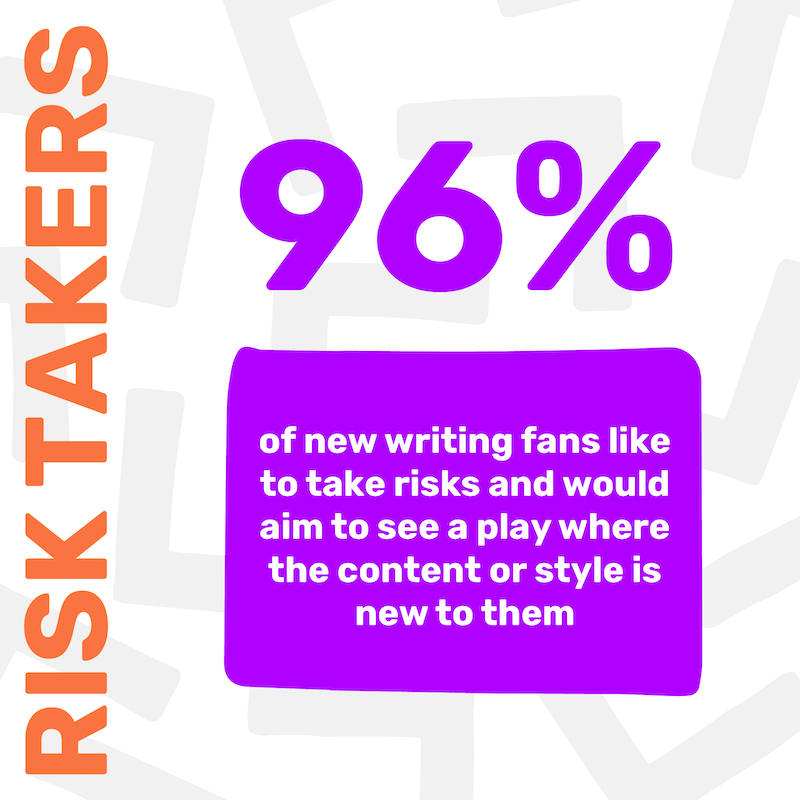
Middle Child style
We were particularly keen to know what people who have seen our work before enjoy the most about our style. At this point we’d like to say thank you especially for all of the additional comments about your favourite Middle Child productions. These are really useful for us to understand exactly what makes a good night out for our audiences.
Back to the stats and for people who have only seen our panto, live music (93%), liveness (89%) and a local cast (86%) are the most appealing elements of our panto. When looking at respondents who have seen new writing, or new writing and panto, a majority consider “a new script” (68%) and “challenging subject matter” (52%) somewhat or very important. Similarly, 96% of new writing fans agree or strongly agree that they “like to take risks and would aim to see a play where the content or style is new to me.”
That’s validation of our mission to creating work not is not only a good night out, but which centres big ideas, working towards a world where anybody’s story can be told and heard. As theatre continues to adjust to the impact of covid, we will nail our new writing and good night out colours to the mast.
To our surprise, only 3% of people who have seen our new writing work consider large sets somewhat or very important, and only 9% consider large (six or more) casts somewhat or very important.
Our most recent shows, such as Modest and There Should Be Unicorns, were both “mid-scale”, featuring larger casts and more complicated sets. While these were huge successes for us and we are proud of what they achieved, mid-scale work is also expensive and complicated to make. Expensive mainly.
As Middle Child and the wider industry grapple with higher costs and overstretched budgets, it’s interesting that our audiences don’t see mid-scale work as vital to our identity as a company, despite loving the shows we have created at this level.
Access
Firstly, I need to hold my hands up to making a pig’s ear of this question. The intention was to understand demand for certain offers, rather than the value people place on each. I also forgot to include wheelchair access, as we always ensure this as a given and have done for many years now. When we next run this survey, we’ll make sure to improve that question.
Despite that error we were still able to find out that performers using microphones was the offer most people thought somewhat or very important (46%), followed by afternoon shows (41%) and relaxed performances (37%).
We remain committed as a company to providing BSL interpretation (26% thought somewhat or very important) for all our pantomimes and major productions, while literary manager Matthew May has now undertaken training in audio description, which will be integrated at every pantomime performance this Christmas.
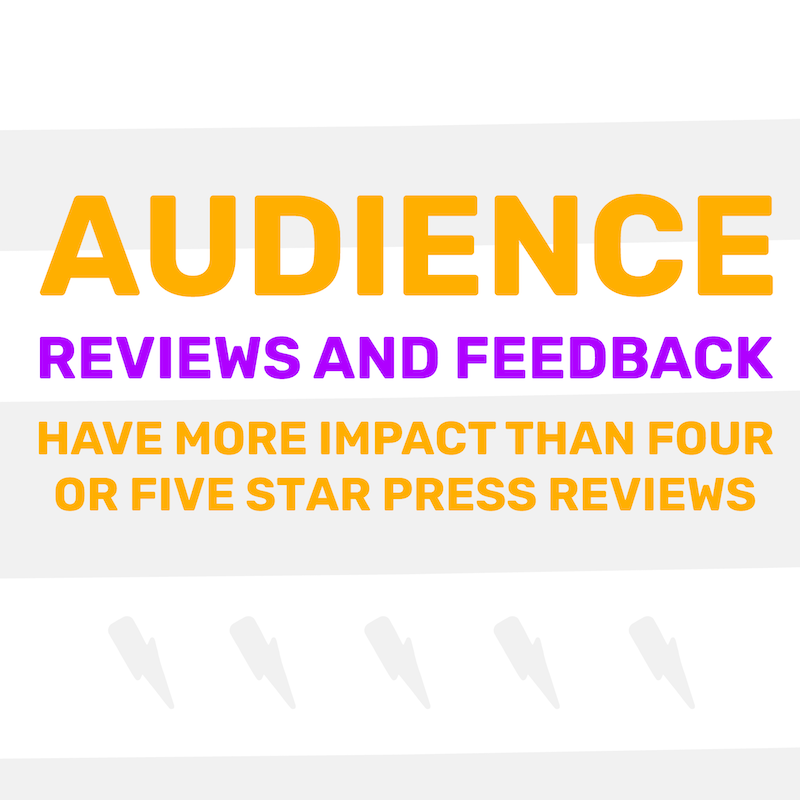
Reviews and feedback
Audiences place more value on positive feedback from other audience members, including those they don’t know, than four or five-star reviews.2
Whether there should be more reviews, to engage in critical debate around a show and to document work for future generations, is another question entirely.
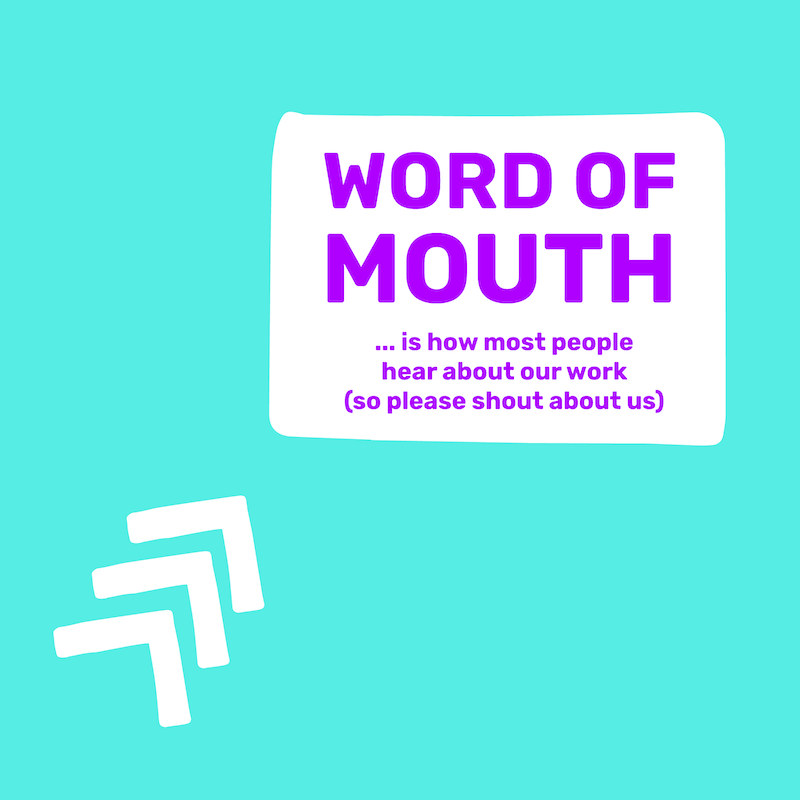
Marketing
Our email and Facebook page are the most popular channels that we manage, in terms of where people have heard about our activity in the past year. Meanwhile word of mouth and Facebook are the most popular non-Middle Child channels.3
Word of mouth is always by far the most popular in our post-show surveys too, reflecting the importance of feedback in the previous point. One of the best ways you can support our work as an audience member then is to tell anybody who will listen to come see our work.
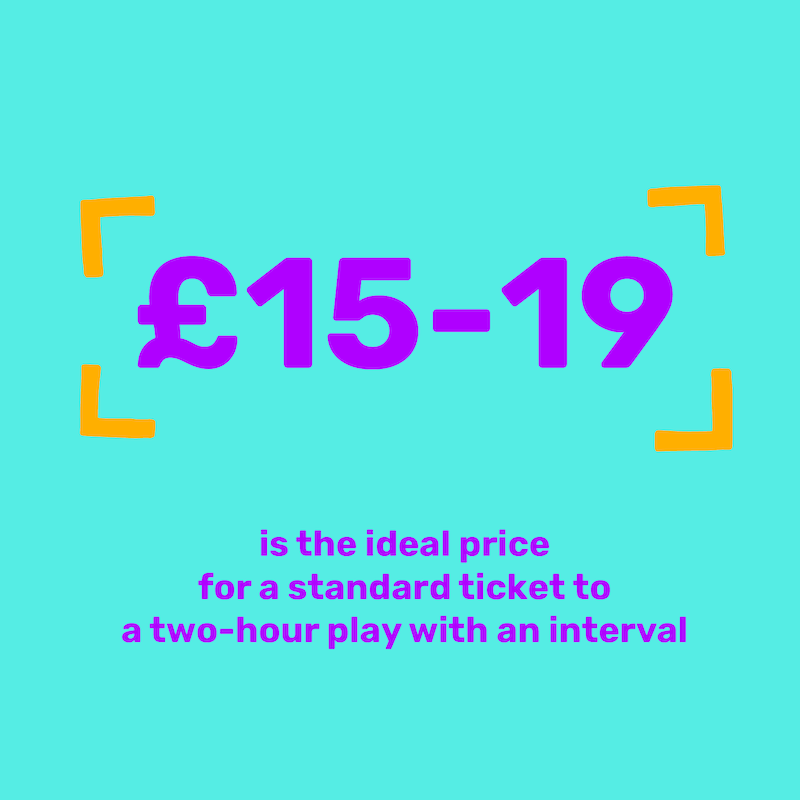
Ticketing
£15-19 is the median ideal price for a standard ticket for a two-hour play, as chosen by 46% of respondents. This also happens to be what we charged for Modest back in May and for Red Riding Hood, coming up this Christmas.
Finding the balance between making theatre affordable and covering our costs is always tricky, so it’s reassuring to know that we are on the right lines with that.
We also continue to make performances financially accessible through things like pay what you decide shows, solidarity tickets and partnerships with local community groups and funders to offer free tickets.
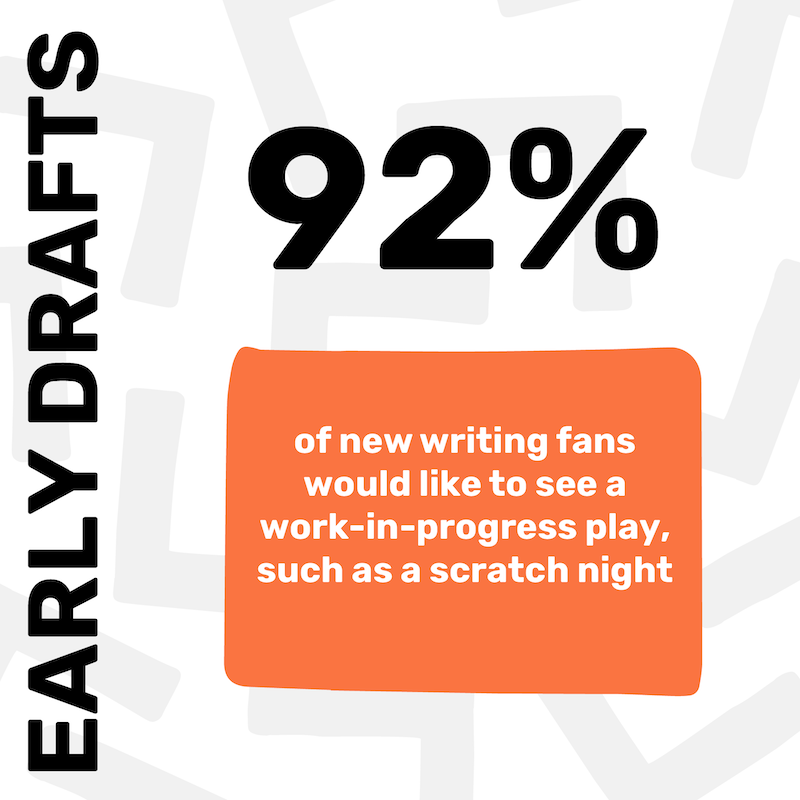
Development
There is a strong appetite to see work-in-progress theatre, especially among new writing audiences, where 92% agree or strongly agree they would like to see some.
This is already proving the case with our Out Loud scratch night: 75% of audiences who attended Casino and 67% who attended 1988 and Shit Life Crisis did not work in the arts.
What next?
We continue to dig into the results further and bear them in mind as we start work on Red Riding Hood and our big show for next year Baby, He Loves You, as well as longer-term thinking. This includes future big show commissions and an exciting new writing programme coming next summer, which we’ll have more details about next month.
We are confident that as that work unfolds, you will be able to join the dots between this survey and the shows we stage in the future, so thank you once again for sharing your feedback.
Footnotes
- 46% of all respondents said they are going out less frequently to some degree, compared with 28% going out about the same amount and 25% going out more frequently to some degree. For people who’ve only attended panto, the figure going out less frequently to some degree is 51%.
- 32% of all respondents agreed or strongly agreed with the statement “I am more likely to want to see a Middle Child show if I read a four or five-star review of it first”; whereas 70% of all respondents agreed or strongly agreed with the statement “I am more likely to want to see a Middle Child show if I read/hear a positive response to it from another audience member that I know.”
- 70% of respondents who have seen our work have heard about us through our email and 68% through our Facebook page. 57% of respondents who have seen our work have heard about us through word of mouth and 52% through other Facebook sources.
